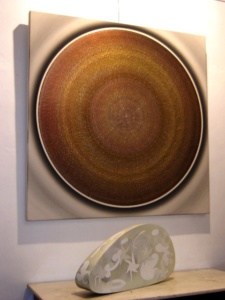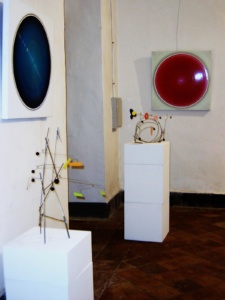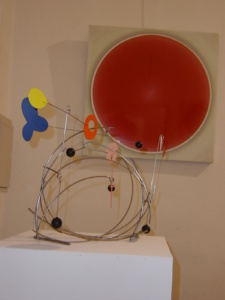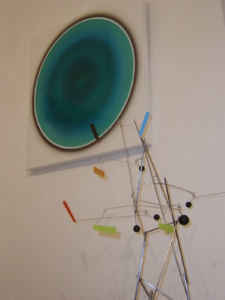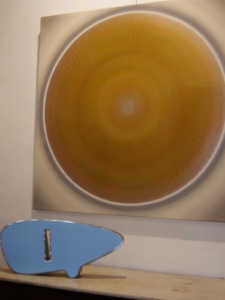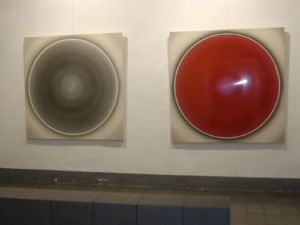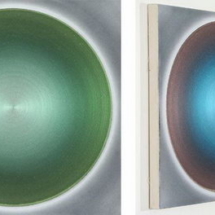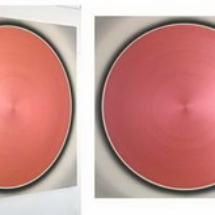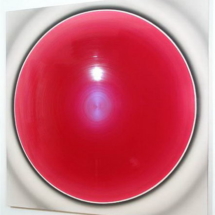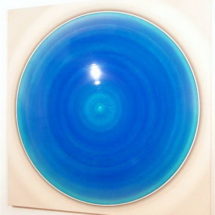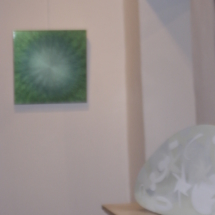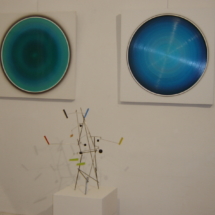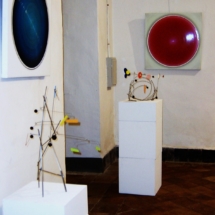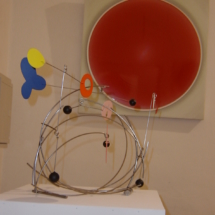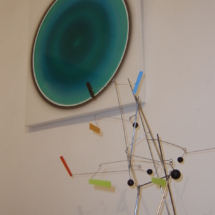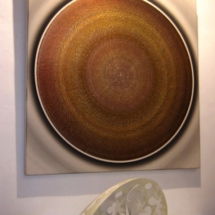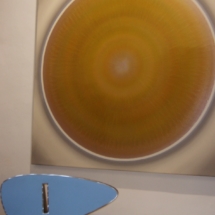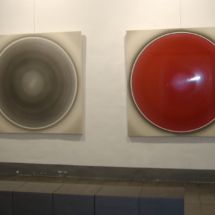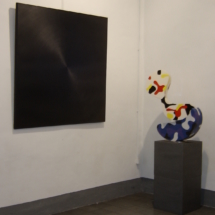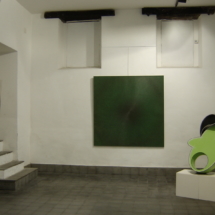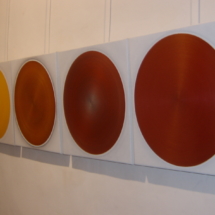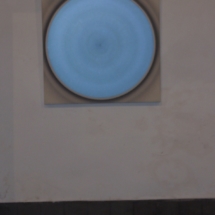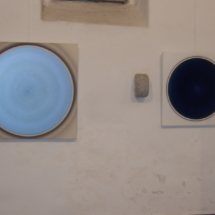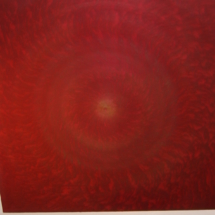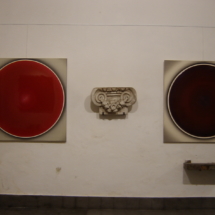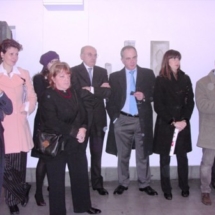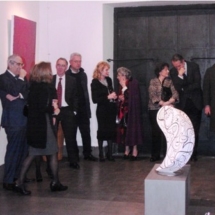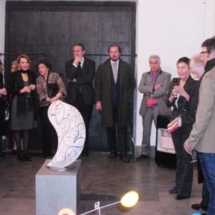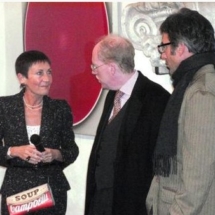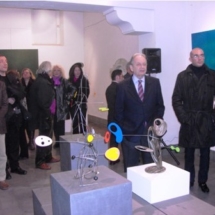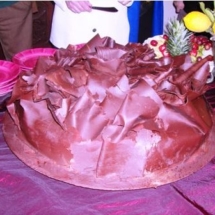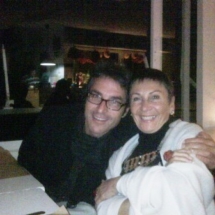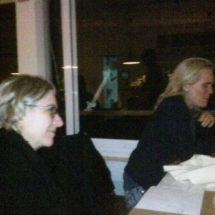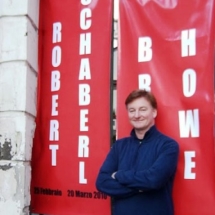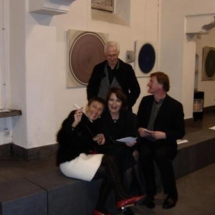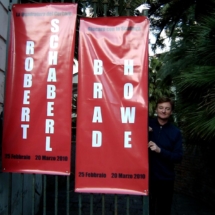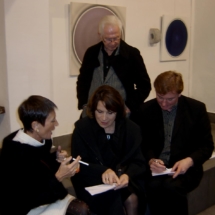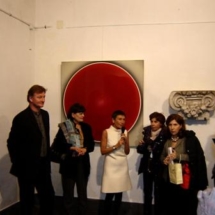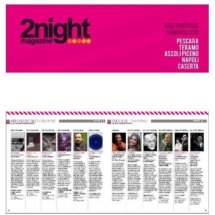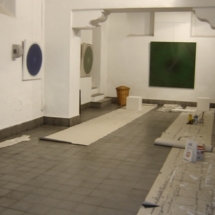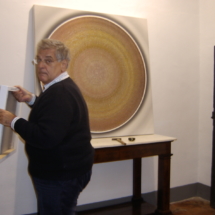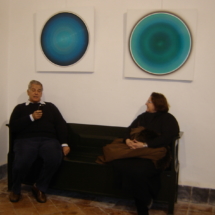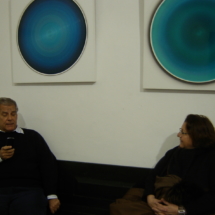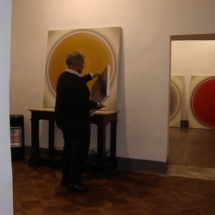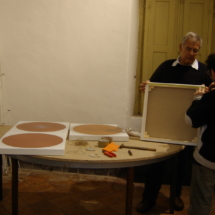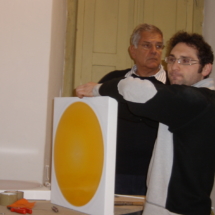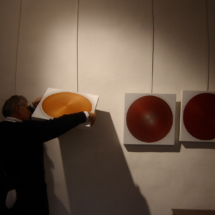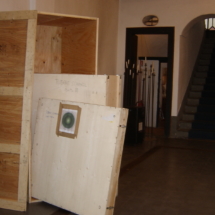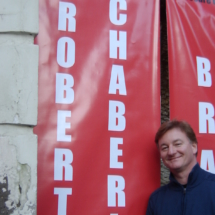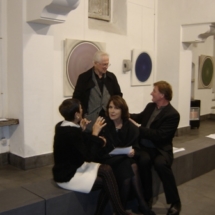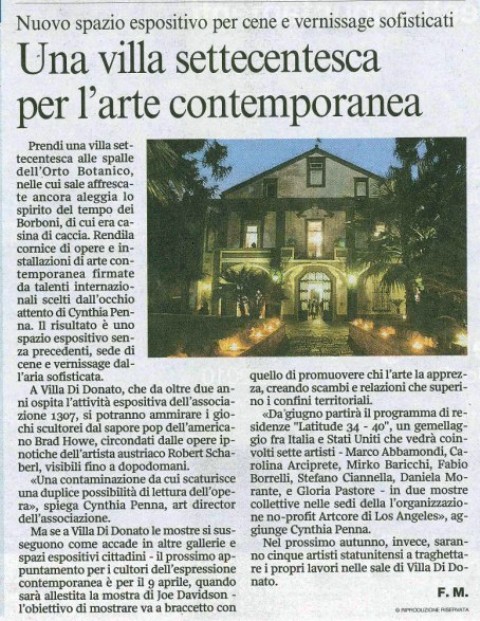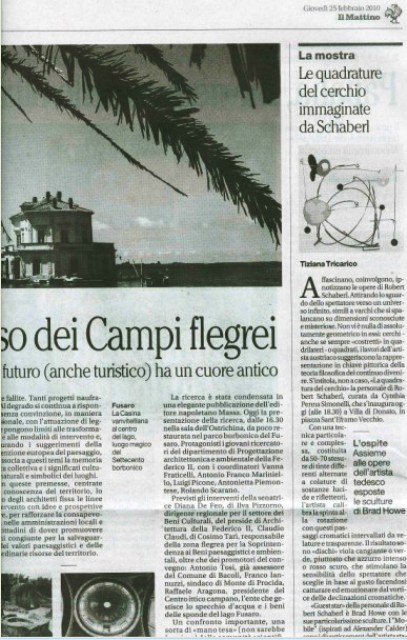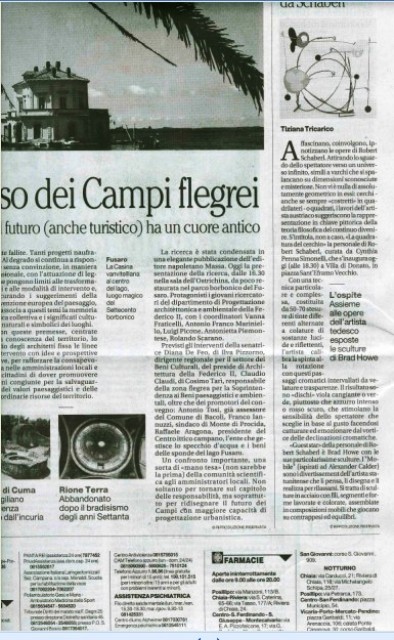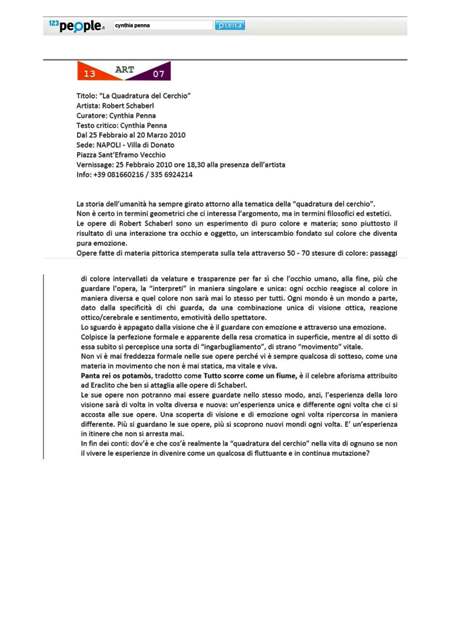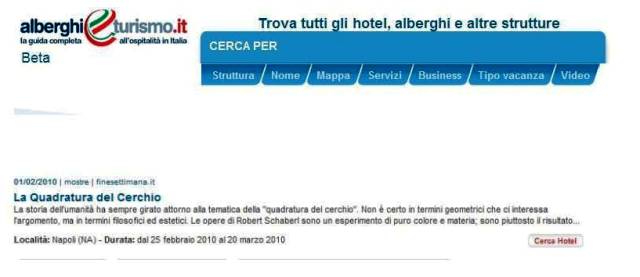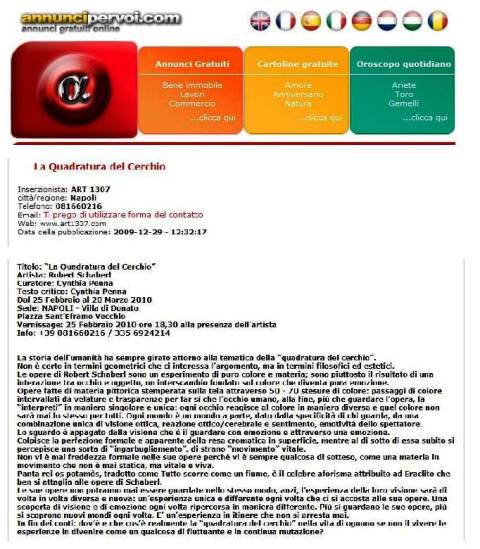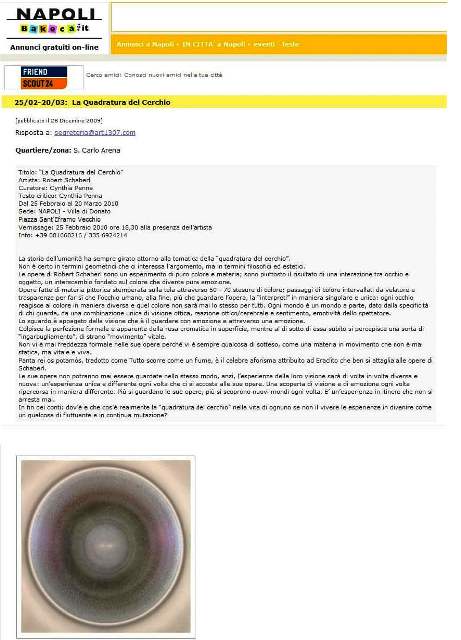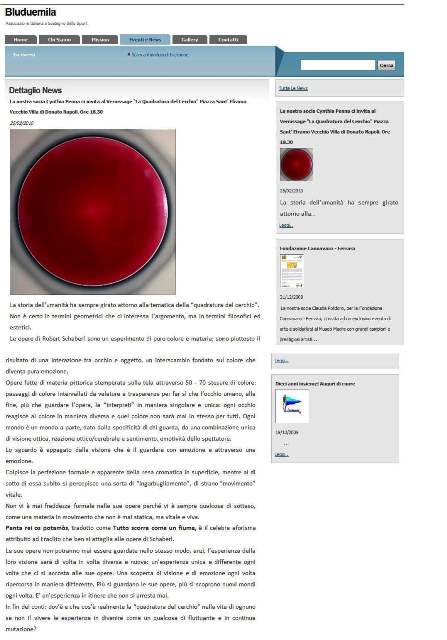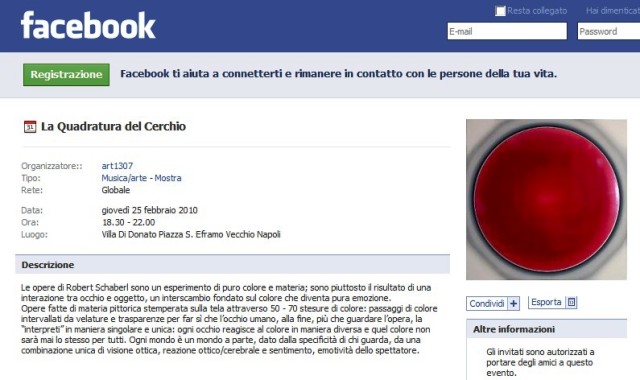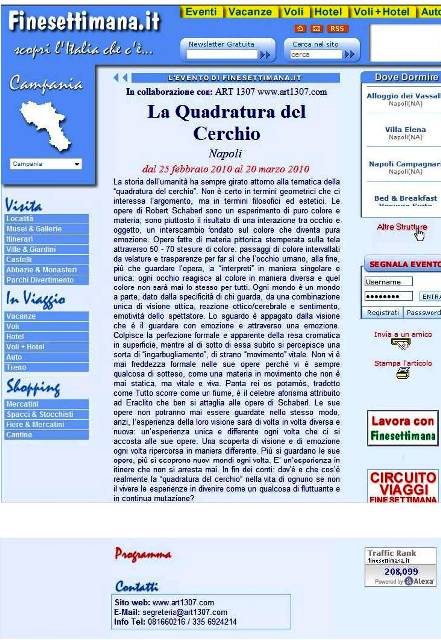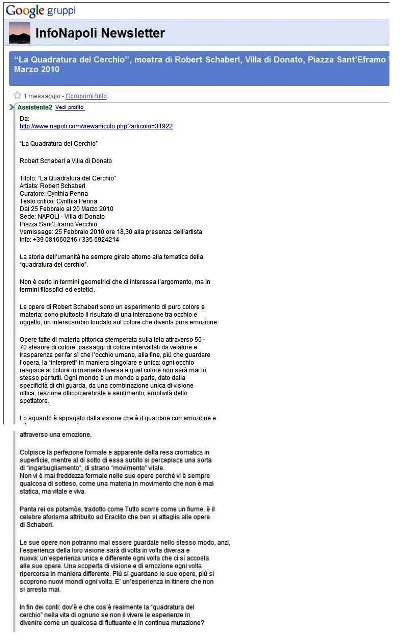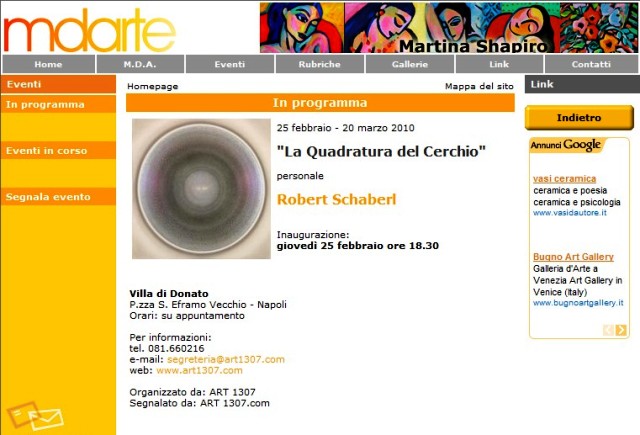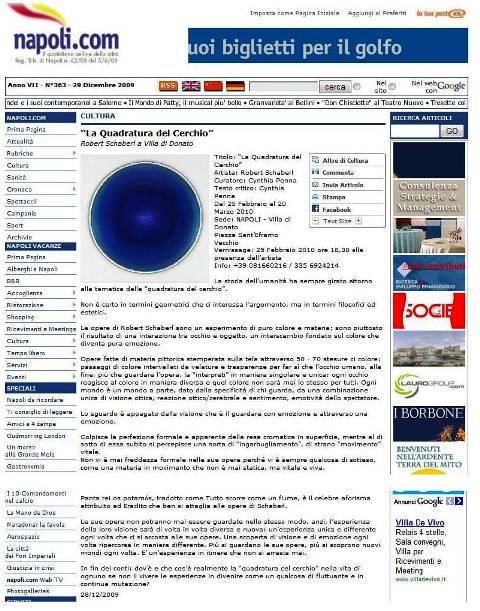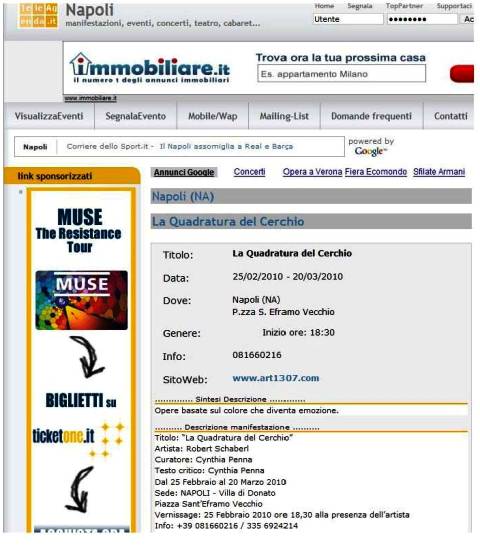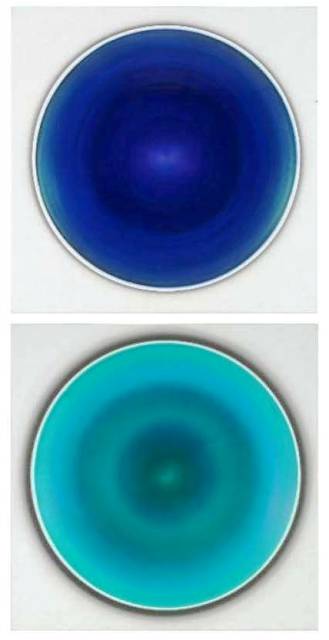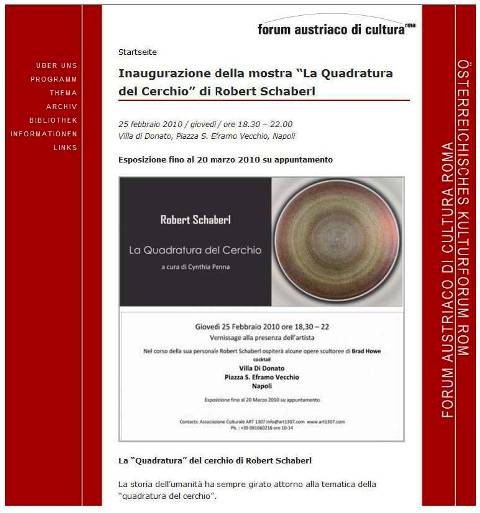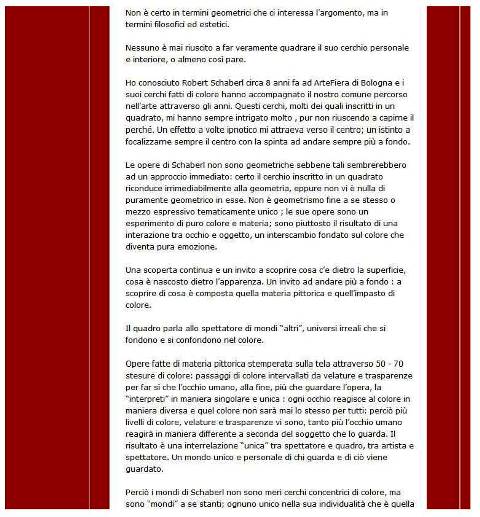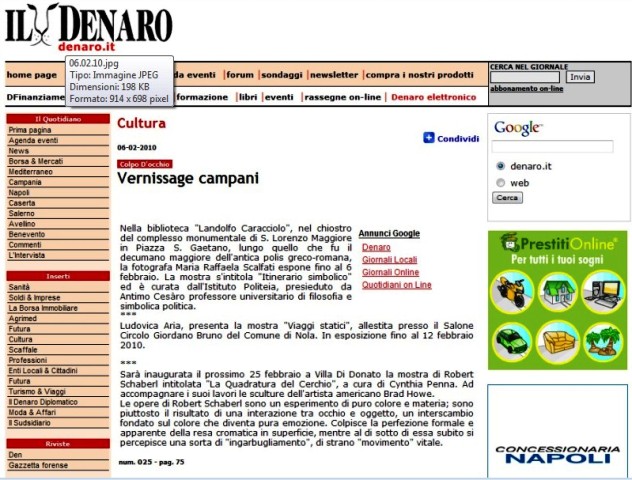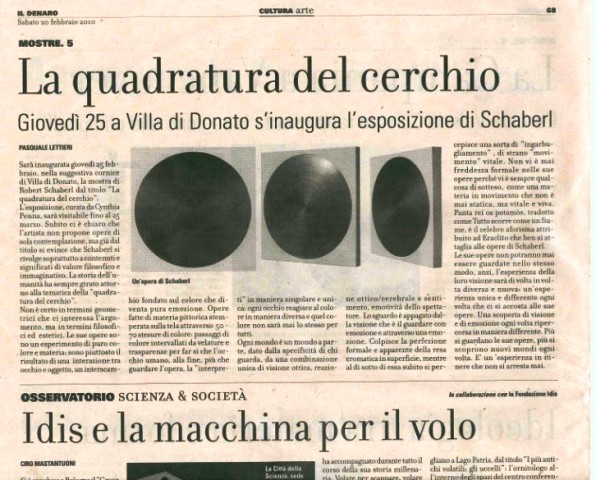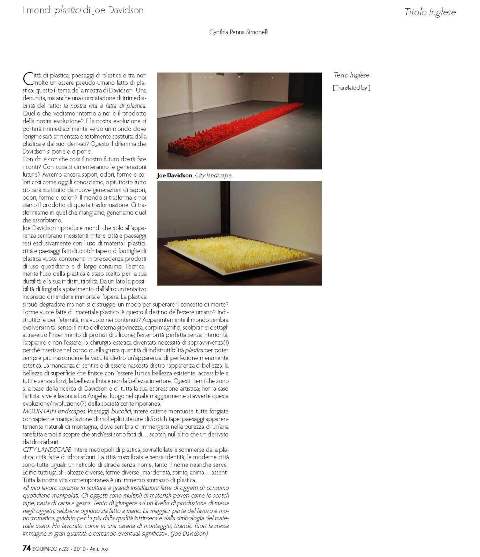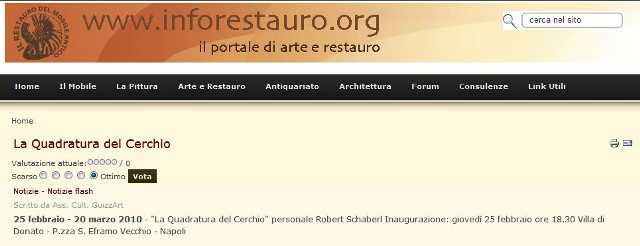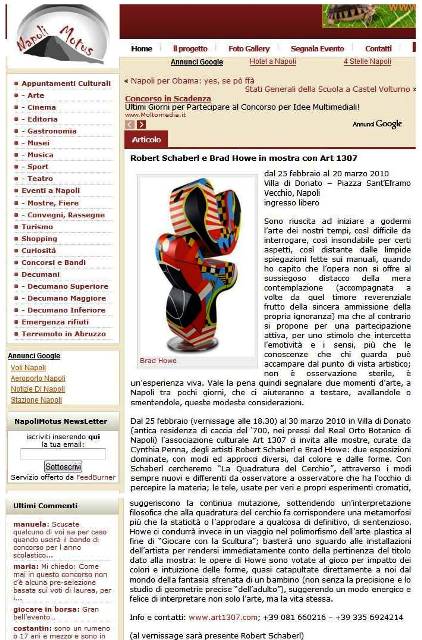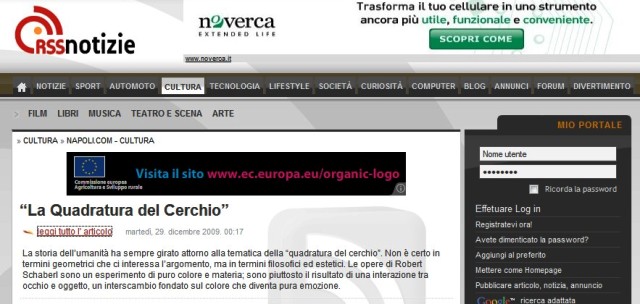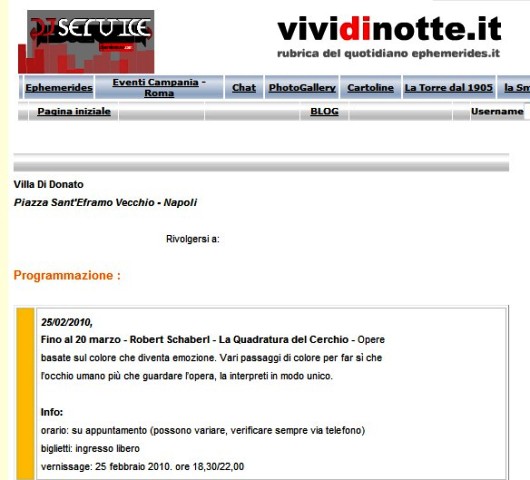The Squaring Of The Circle/h1>
Villa Di Donato
From 25/02/2010 to 25/03/2010
Curator: Cynthia Penna
Press: ART1307
PRESS RELEASE
The history of Mankind has always centred on the theme of the “squaring of the circle”. A problem which certainly does not interest us in geometric, but in philosophic and aesthetic terms.
No-one has managed to truly square his personal and interior circle, or at least it does not seem like anyone has.
I met Robert Schaberl about eight years ago at ArteFiera in Bologna, and his circles of colour have accompanied us along our path in art over the years. These circles, many of which are inscribed in a square, have always intrigued me, even if I cannot understand why. A sometimes hypnotic effect draws me towards the centre; an instinct to always focus on the centre, with a desire to always explore things more in depth.
The works of Schaberl are not geometric, even if they may appear to be so at first glance; the circle inscribed in a square inevitably suggests geometry, yet there is nothing purely geometric in it. It is not geometrism as an end in itself, or the only thematic means of expression; his works are an experiment of pure colour and material; they are above all the result of an interaction between eye and subject, an interchange based on colour which becomes pure emotion.
A continuous discovery and an invitation to discover what is concealed beyond the surface, what is hidden behind the appearance. An invitation to explore more in depth, to discover how the painting has been created, with what material and mixtures of colour.
The painting tells the onlooker about “other” worlds, unreal universes that are merged and confused in the colour.
Works made from paint, which has been dissolved on the canvas by means of 50-70 coats; transitions of colour interspaced by coats and transparencies to make the eye do something more than merely look at the work, to interpret it in a singular and unique way; every eye reacts differently to the colour, and the colour will never be the same for everyone; thus the more levels of colour, coats and transparencies there are, the more different will the perceptions of the individual observers be. The result is a “unique” interrelation between spectator and painting, between artist and spectator. A unique and personal world of those who look, and what they look at. Thus the worlds created by Schaberl are not merely concentric circles of colours, they are “worlds” in their own right; each is unique in its individuality, which is the one attributed by the spectator: every world is a world apart, determined by the peculiarity of the onlooker, by a unique combination of sight, optical/cerebral reaction and sentiment, emotional state of the spectator.
The eye is gratified by the vision; the spectator sees with emotion, and through emotion.
One is struck by the formal and apparent perfection of the chromatic rendition on the surface; at the same time one perceives a kind of “tangle” or strange vital “movement” below it.
There is never any formal coldness in his works, because there is always something implied, like a matter in movement which is never static, but vital and alive.
In works like ”Weinrot rotation” from 2003 or “Grau violett gold” from 2004 one perceives the life within the painting, a world in the making, a developing world that is never static.
The Heraclidean development of “everything flows”, everything is transformed and everything is life. Heraclitus’ famous aphorism, Panta rei os potamòs , or Everything flows like a river, is well suited to the works of Schaberl.
«It is not possible to descend into the same river twice, or to touch a mortal substance twice in the same state; due to the impetuosity and speed of change it is dispersed and collected, it comes and goes » From the Treatise: On Nature.
In this passage Heraclitus stresses that Man can never have the same experience twice, because every entity is, in its apparent reality, subject to the inexorable law of time. But Heraclitus nevertheless underscores that there is a Logos underlying this continuous change, a profound harmony which governs, in an obscure and unknowable way, the perennial dialectic between opposites…..
A rendition of a philosophic theory in images: this is what Schaberl’s work appears to be: a continuous development, an organized and not chaotic transformation of matter.
His works can never be looked at in the same way; indeed, the experience of their vision will be different and new every time: a unique and different experience every time one approaches his works. A discovery of vision and emotion, perceived in a new way every time. The more one looks at his works, the more one discovers new worlds. It is an ever-changing experience which never ends. Yet this world is governed by a Logos which organizes and balances its opposites.
In the final analysis, where is the “squaring of the circle” and in what does it really consist, in the life of everyone, if not in the experiences that develop like something fluctuating and in continuous mutation? To accept changes in ourselves and in others, physical and mental transformations through a process which balances rationality and emotionality; to circumscribe a circle with a square, just as in the works of Robert, where chaos is always organized and rationalized in a compact and solid, yet evanescent and dreamy, whole.
VIDEO
Montaggio Mostra Schaberl – Howe Febbraio 2010
Backstage della mostra di Robert Schaberl con l’inserimento di alcune opere di Brad Howe nel Febbraio 2010 a Napoli Villa Di Donato.
La Quadratura del Cerchio
Video delle opere di Robert Schaberl presentate a Villa di Donato, Napoli , Febbraio/Marzo 2010

